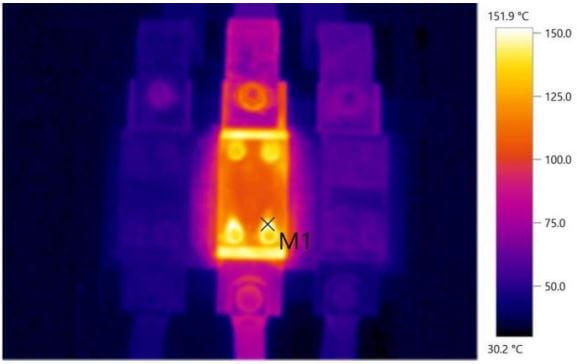Introduction
Thermography audit, a non-invasive and cost-effective technique for identifying temperature variations and anomalies in equipment and structures, plays a crucial role in preventive maintenance and quality control. However, like any technology, thermography audits come with their own set of challenges. In this blog, we will discuss some of the key challenges faced in thermography audits and explore effective strategies to overcome them.

Environmental Factors:
Challenge: Ambient temperature, humidity, and other environmental conditions can affect the accuracy of thermal images, making it difficult to identify anomalies.
Solution: Ensure that thermography audits are conducted under controlled environmental conditions whenever possible. Calibration and baseline measurements can help account for environmental factors.
Equipment Variability:
Challenge: Different equipment may emit varying levels of heat, making it challenging to establish a standard baseline for thermal imaging.
Solution: Regularly calibrate your thermal imaging equipment and create equipment-specific baselines to account for variations. Consult with experts if necessary.
Complex Geometries:
Challenge: Complex structures with intricate geometries can be challenging to thermographically assess, as they may obscure the view or create misleading thermal patterns.
Solution: Use multiple angles and perspectives to capture thermal data from various vantage points. Consider using specialized thermography techniques for complex geometries.
Personnel Training:
Challenge: Inaccurate interpretation of thermal images due to a lack of training and expertise can lead to misdiagnosis.
Solution: Invest in comprehensive training programs for personnel involved in thermography audits. Ensure they are certified and keep their skills up to date.
Data Analysis and Reporting:
Challenge: The sheer volume of data generated during thermography audits can be overwhelming, making it difficult to process and report findings efficiently.
Solution: Use software tools to manage and analyze data, and establish a structured reporting system to convey findings clearly and concisely.
Safety Concerns:
Challenge: Some thermography audits involve assessing potentially hazardous equipment or environments, raising safety concerns for personnel.
Solution: Prioritize safety by ensuring personnel are adequately trained and equipped to handle hazardous situations. Follow safety protocols and regulations.
Budget Constraints:
Challenge: Thermography equipment can be costly, and budget limitations may hinder the adoption of advanced technology.
Solution: Consider cost-effective alternatives or outsourcing thermography audits to specialized service providers like Elion Technologies and Consulting Private Limited.
Conclusion
Thermography audits are invaluable tools for detecting equipment and structural issues before they escalate, but they come with their share of challenges. By addressing environmental factors, equipment variability, complex geometries, personnel training, data analysis, safety concerns, and budget constraints, you can significantly improve the effectiveness of thermography audits. With the right strategies in place, you can make the most out of this technology, ensuring the reliability and safety of your operations. If you need expert assistance in thermography audits and overcoming these challenges, consider reaching out to Elion Technologies and Consulting Private Limited for their specialized services.
For more queries, please contact Elion Technologies









